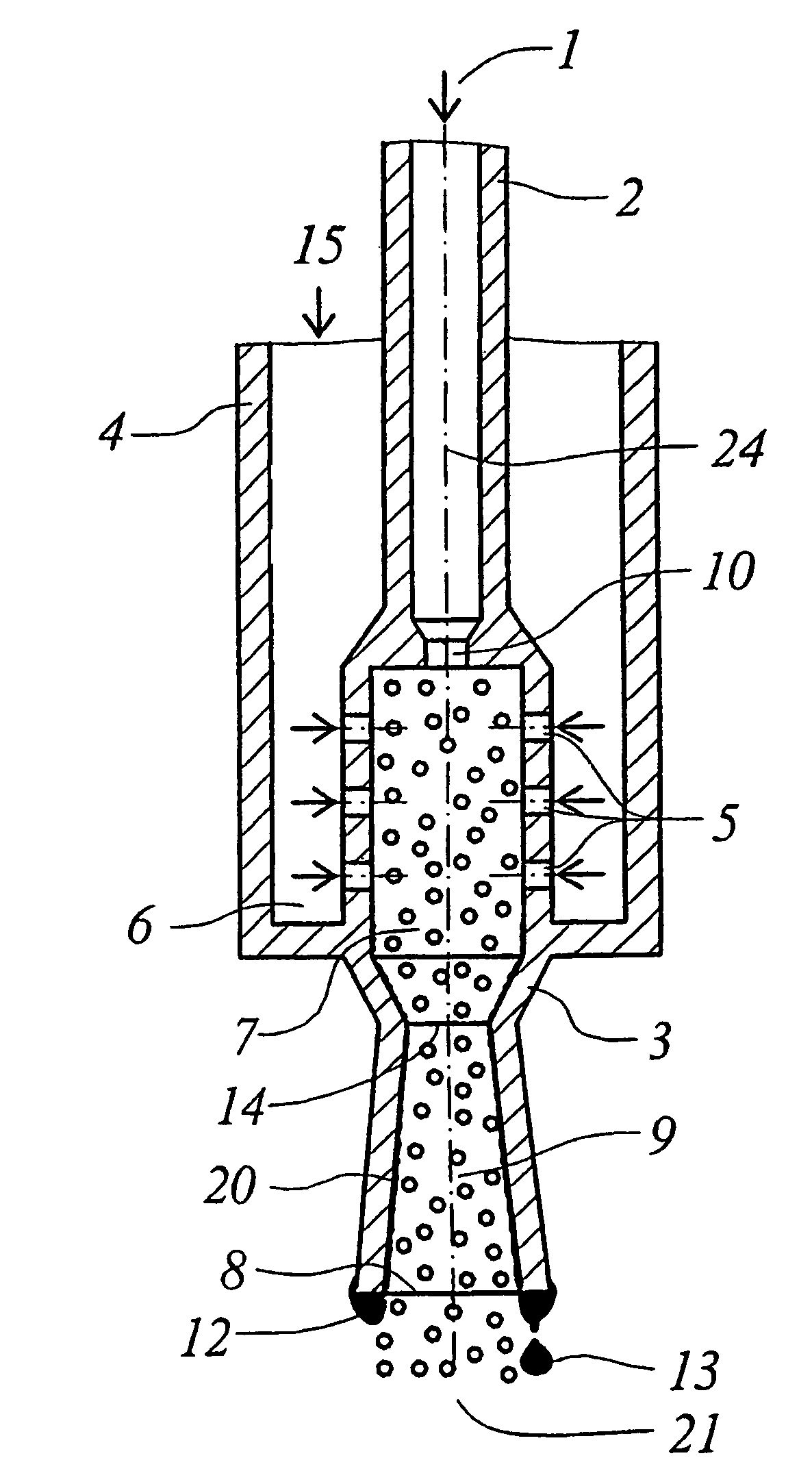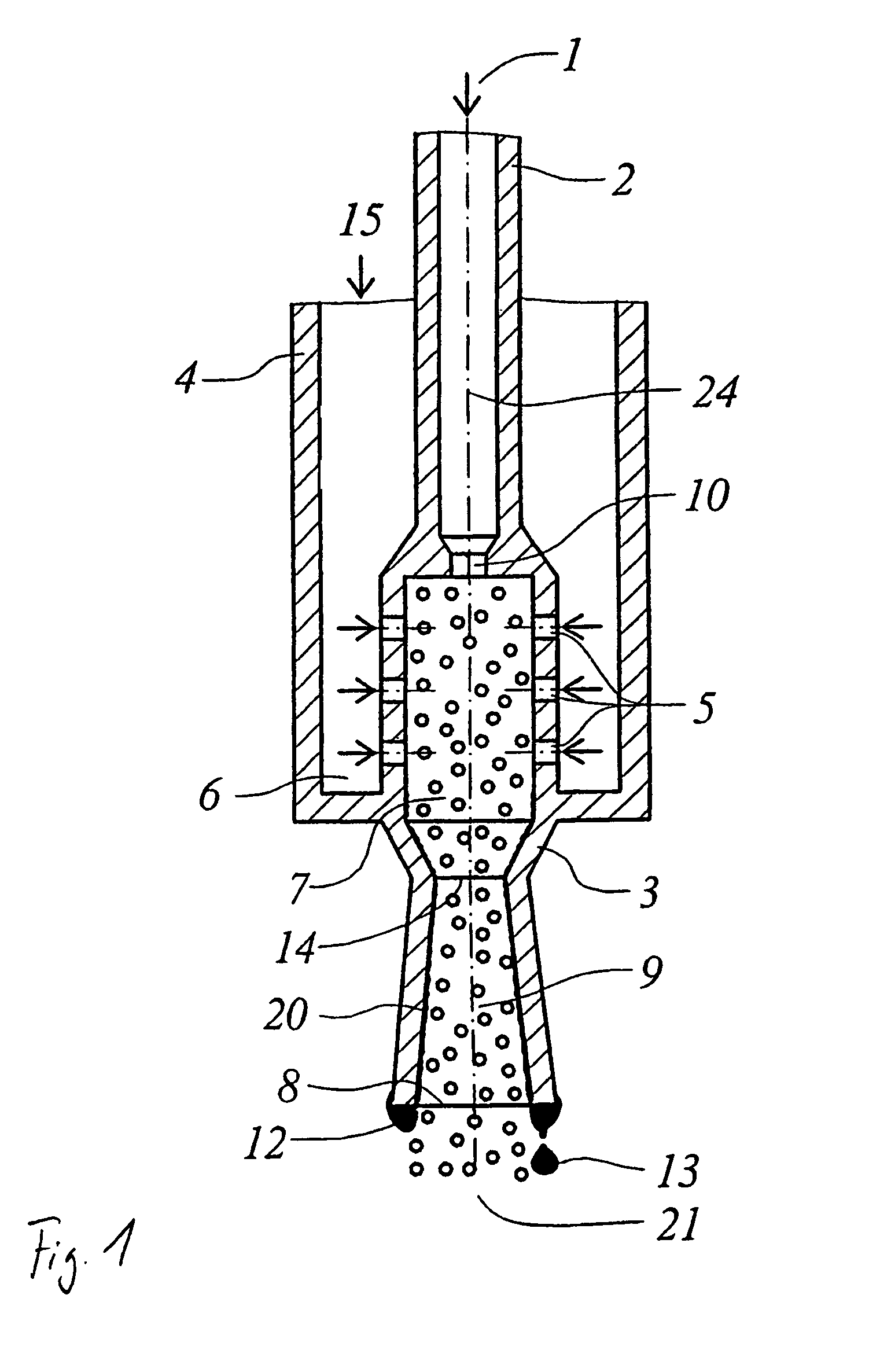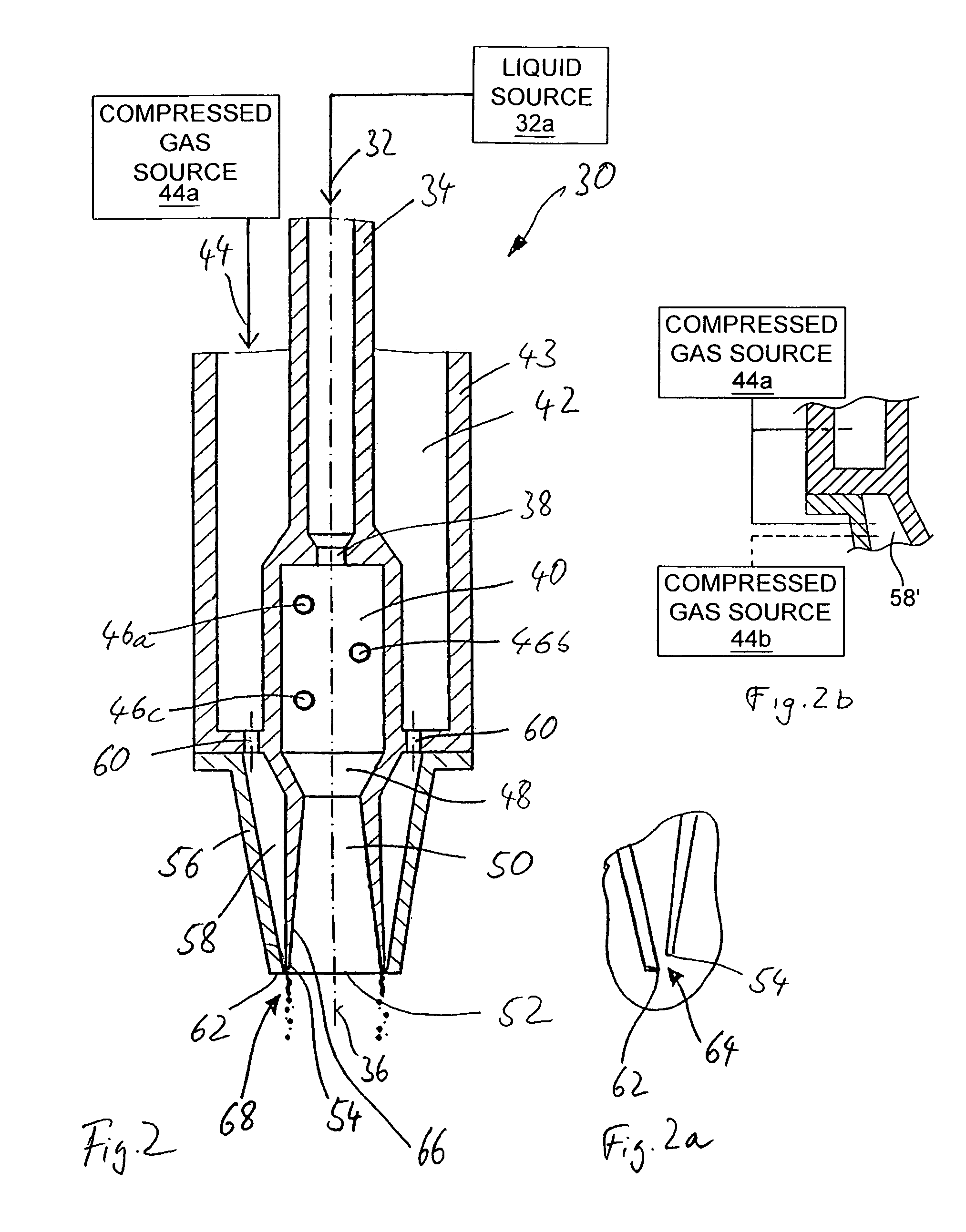Two-substance atomizing nozzle
a technology of atomizing nozzles and substances, which is applied in the direction of gaseous fuel burners, combustion types, combustion processes, etc., can solve the problems of considerable affecting the operation of the reaction vessel, the size of the reaction vessel and its production costs, and the inability to meet the requirements of the production process
- Summary
- Abstract
- Description
- Claims
- Application Information
AI Technical Summary
Benefits of technology
Problems solved by technology
Method used
Image
Examples
Embodiment Construction
[0045]The sectional view of FIG. 2 shows a two-substance atomizing nozzle 30 according to the invention, according to a first preferred embodiment. The two-substance atomizing nozzle 30 according to the invention is constructed in a way similar to the known nozzle according to FIG. 1, at least as far as the introduction of the liquid and the compressed gas into the mixing chamber and the shaping of the nozzle adjoining the mixing chamber are concerned. A liquid to be atomized is supplied in the direction of an arrow 32 from a liquid source 32a by way of an inner lance tube 34, which extends parallel to a center longitudinal axis 36 of the nozzle 30, and passes to a liquid inlet 38, which has a reduced cross section in comparison with the tube 34. After passing the liquid inlet 38, the liquid then passes in the form of a liquid jet extending concentrically with respect to the center longitudinal axis 36 into the cylindrical mixing chamber 40 arranged concentrically with respect to th...
PUM
 Login to View More
Login to View More Abstract
Description
Claims
Application Information
 Login to View More
Login to View More - R&D
- Intellectual Property
- Life Sciences
- Materials
- Tech Scout
- Unparalleled Data Quality
- Higher Quality Content
- 60% Fewer Hallucinations
Browse by: Latest US Patents, China's latest patents, Technical Efficacy Thesaurus, Application Domain, Technology Topic, Popular Technical Reports.
© 2025 PatSnap. All rights reserved.Legal|Privacy policy|Modern Slavery Act Transparency Statement|Sitemap|About US| Contact US: help@patsnap.com



